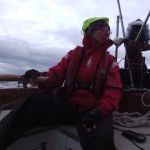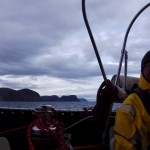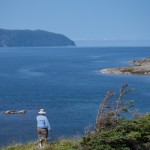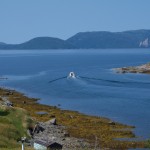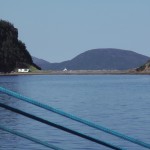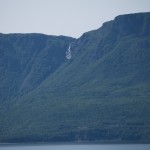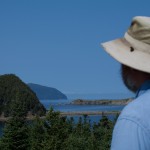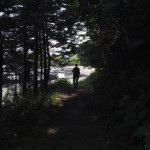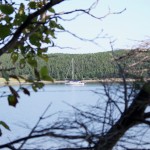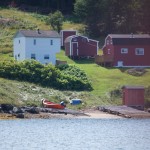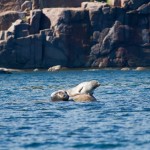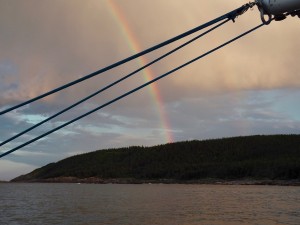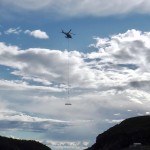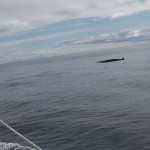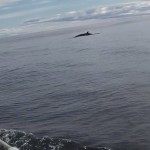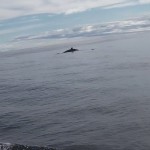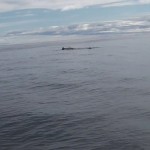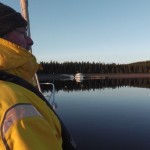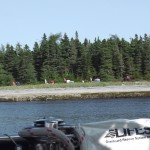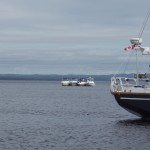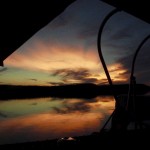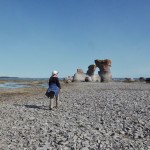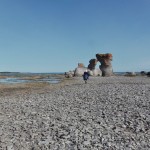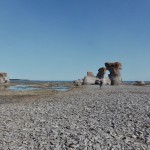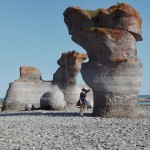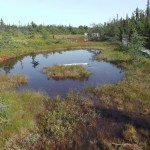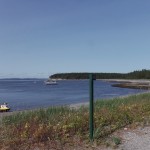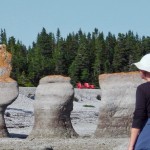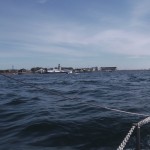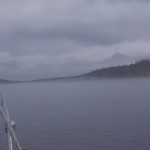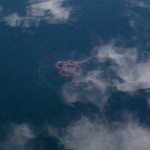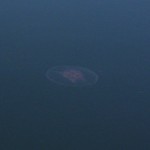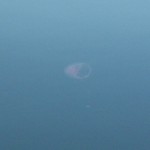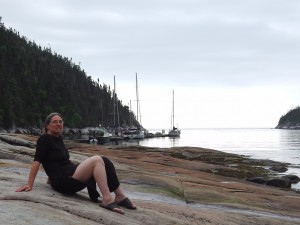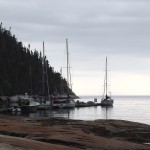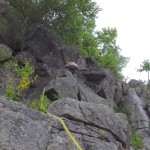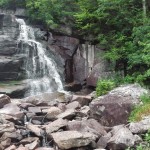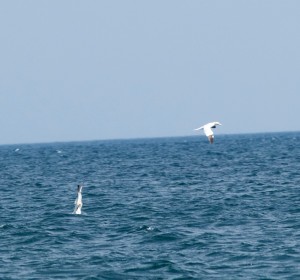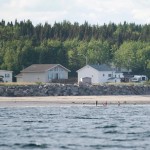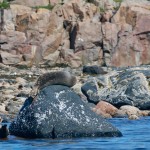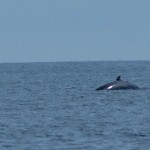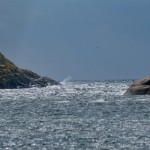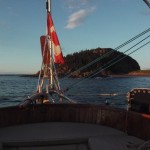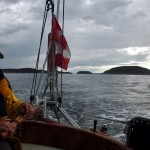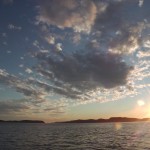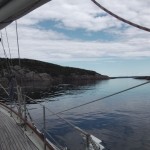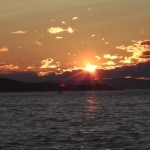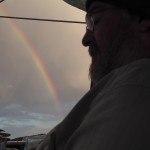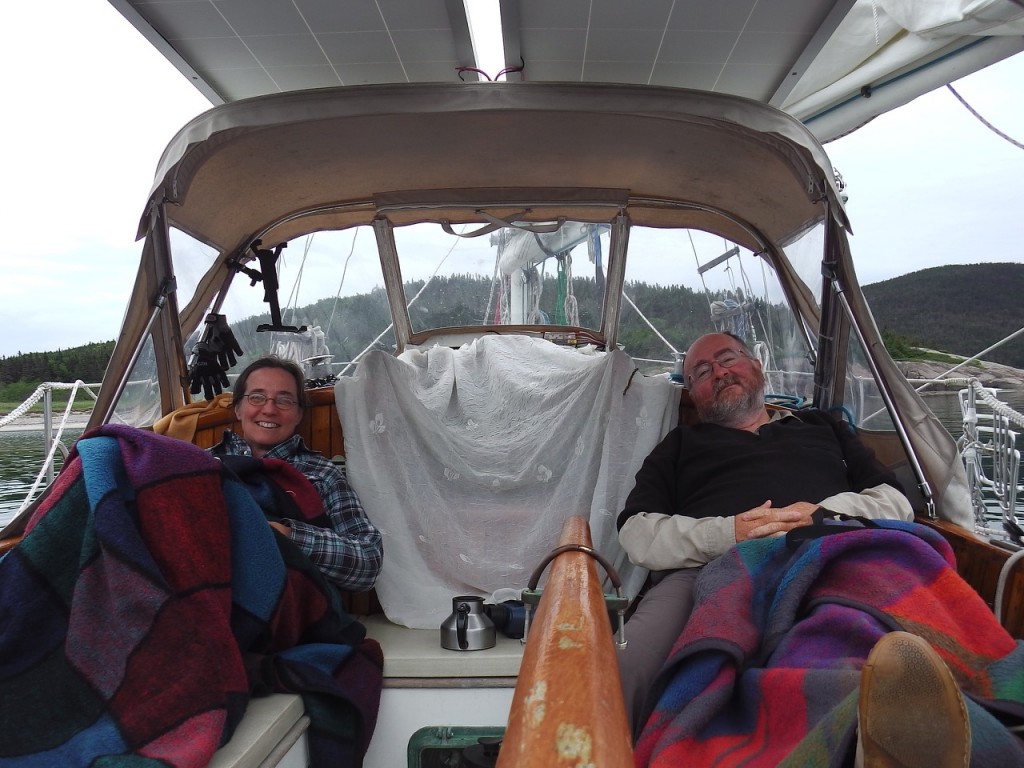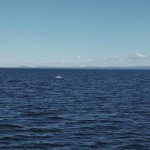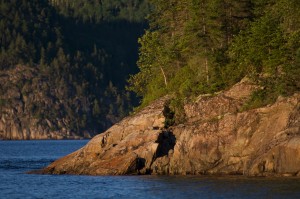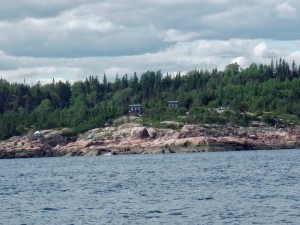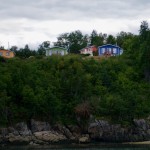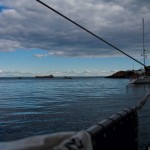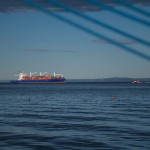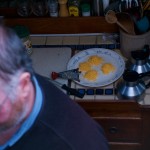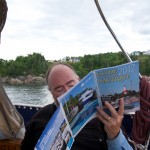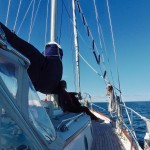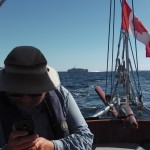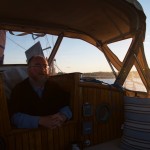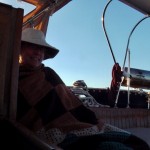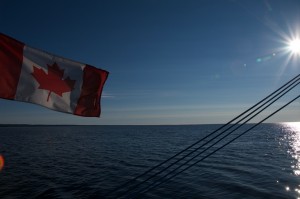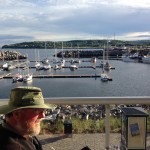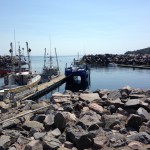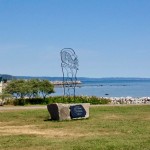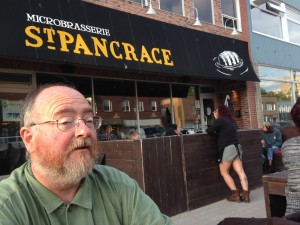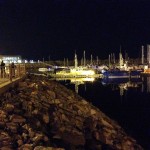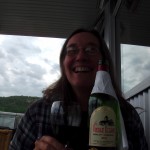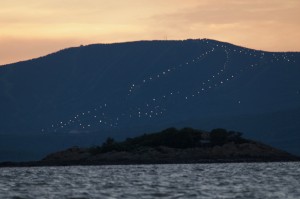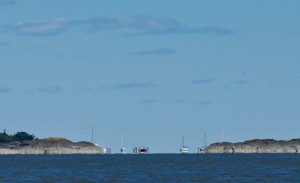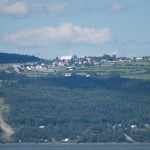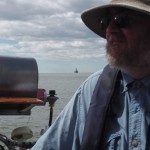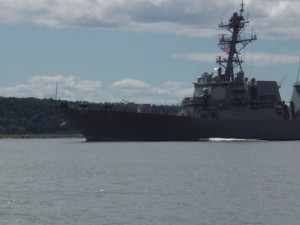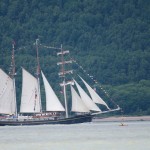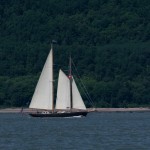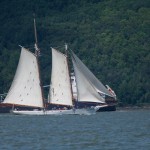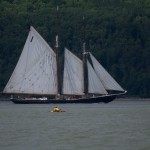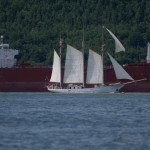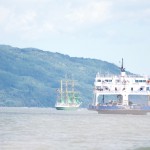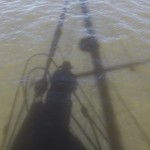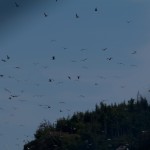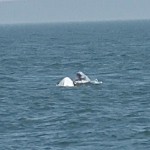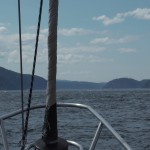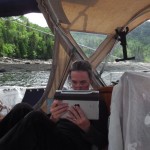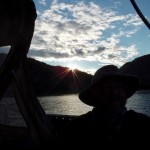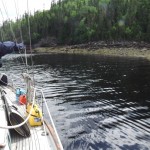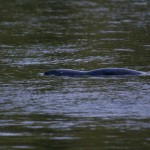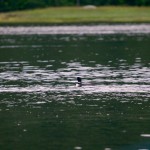BANG! CRASH! SMASH!! I was abruptly and harshly awakened two hours into my four hour off-watch sleep when my body hit the ceiling of our forward berth. We had come crashing down from a huge wave. Then another…
We were within 15 nautical miles of the Bay of Islands, but the gods of Easy Crossings and Gentle Seas had handed things over to whatever gods Ann has pissed off in the past. We entered nautical hell!
… but more on that later.
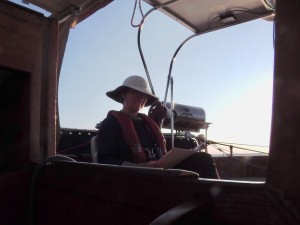
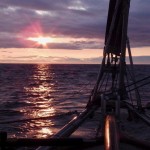 We left Mingan at about 11 am, heading out on about a 230 nautical mile crossing to Bay of Islands which houses Corner Brook. This would be the longest continual sail we’ve ever done, but only by about 50 or so miles. We’ve crossed Lake Superior before, and that was close to 180 nm … or was that 140?? Ah well, close enough… Anyway, we’d found what looked like the perfect weather window for what should have been a 40 hour crossing for our little boat.
We left Mingan at about 11 am, heading out on about a 230 nautical mile crossing to Bay of Islands which houses Corner Brook. This would be the longest continual sail we’ve ever done, but only by about 50 or so miles. We’ve crossed Lake Superior before, and that was close to 180 nm … or was that 140?? Ah well, close enough… Anyway, we’d found what looked like the perfect weather window for what should have been a 40 hour crossing for our little boat.
Everything went according to plan for the first two days and most of two nights. The winds came up steady and moderate (10 to 15 knots most of the time) from the SW over the first day and through the night, but the seas were moderate and the direction remained pretty constant. We had swapped out the normal heavy headsail (yankee) for our light air drifter, so we moved along nicely all through the night. Aries, our windvane, steered us through those first 24 hours with nary a complaint.
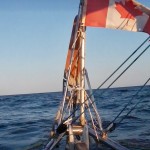 The overnight sky gave a stunning stellar display. Other than a somewhat close encounter of the freighter kind that required a course change (1.8 nm seems awfully close in the dark), everything was great. We ate well from the stew I had made the previous day. We slept, and just enjoyed the solitude. There’s something stunningly beautiful about being alone on the sea with nothing around you but water, wind and waves.
The overnight sky gave a stunning stellar display. Other than a somewhat close encounter of the freighter kind that required a course change (1.8 nm seems awfully close in the dark), everything was great. We ate well from the stew I had made the previous day. We slept, and just enjoyed the solitude. There’s something stunningly beautiful about being alone on the sea with nothing around you but water, wind and waves.
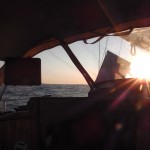 The sun rose on the second day, and as predicted, the winds began to drop. We expected this to happen so eventually dropped sails and turned to Grampa Tractor to push us along. We’d covered close to half of our distance by then, so things were going well.
The sun rose on the second day, and as predicted, the winds began to drop. We expected this to happen so eventually dropped sails and turned to Grampa Tractor to push us along. We’d covered close to half of our distance by then, so things were going well.
The sun set as normal. We’d had our second hot, warm supper of stew and bread, and I had been off for my last watch, when… well, you know.
(These were taken well after the big wind and seas had passed.)
I clawed my way up to the cockpit to find Ann hanging on to the tiller, working very hard to keep us on track and safe. We were still motoring at this point, and naturally, things were looking odd with the engine. “The oil pressure is dropping!” yells Ann. Oh goodie… Our engine loses oil. It’s always done this, so we just keep adding a bit after every motoring day. But we’d been running for nearly 20 hrs now, and Grampa was running dry.
I got on my foulies, and crawled out onto the foredeck (harnessed and tethered) to raise a double-reefed sail and staysail. No easy task in the large bouncy seas, but we got the job done. Once we got the sails up Ann was able to keep us moving through the seas, so we shut down the engine and I managed to get down below, get the engine room opened, and get enough oil back in to make Grampa happy once again.
Things were looking good. The engine was purring away, and winds that had risen to high teens had dropped back a bit. Seas subsided a little and we thought we were home free. But Newfoundland was not happy yet. We still had to prove our mettle.
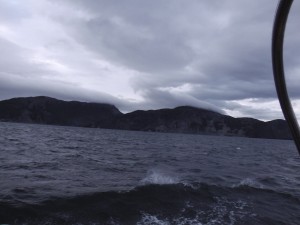 By about 3 am wind and seas started building again. The nor’easter that the forecast promised wouldn’t hit till late in the day had overtaken us. We were now facing near-gale wind right on the nose, and rapidly building seas. By then the day was dawning and we could at least see the land. Of course we could also see the big waves … sometimes it’s better not to see them 😉
By about 3 am wind and seas started building again. The nor’easter that the forecast promised wouldn’t hit till late in the day had overtaken us. We were now facing near-gale wind right on the nose, and rapidly building seas. By then the day was dawning and we could at least see the land. Of course we could also see the big waves … sometimes it’s better not to see them 😉
Anyway, it took us the next six hours to travel the few nautical miles to enter the Bay of Islands. With Ann’s expert helming (she wouldn’t let me touch the tiller till the worst had passed), and Pachina Mia’s awesome nature, we managed to make it inside the big bay. Once inside the bay the seas dropped off, giving us a relatively easy sail to our anchorage.
We found our way past the shoals and entered Wood’s Island anchorage. It was about 9 am and we were just about to drop the anchor when a skiff came roaring over to us. “Welcome to Corner Brook Michael O’Reilly!” yells the one fellow … ?!?
Not often does one sail 62 days only to have the very first words you hear being your own name.
Turns out the fellow was/is Byron. He is a member of the Bay of Islands Yacht Club — our new yacht club. I had emailed the Harbour Master a couple weeks earlier, letting him know we were getting closer. Turns out the whole club seemingly knew we were coming b/c we later met a few more boaters in the anchorage who knew all about us. Gotta love small communities!
Anyway, we encountered a few more problems getting the anchor down (the chain pile had completely flipped over in the locker with all the huge seas), then discovered one of our hatches had leaked onto the bed. The boat was a general mess, and the composting head had flooded from water coming down the air vent.
It took us a few more hours to sort all this out. Then we ate something. Had a quick toast to Newfoundland, and went to bed. We slept for a goodly long time before waking up to the stunning beauty of the place.
“This is why we left Lake Superior!”
Wood’s Island was once a thriving fishing community. It was apparently the largest community on the west coast at one point. Now all that remains is a small collection of camps.
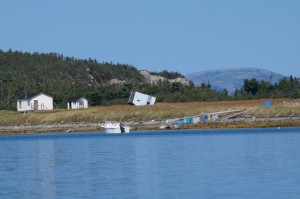 The anchorage remained peaceful and calm the four days we were there. But we were warned the winds can become pretty fierce, even in this protected bay. And as evidence, we could see a house that had blown over — yup, blown over…
The anchorage remained peaceful and calm the four days we were there. But we were warned the winds can become pretty fierce, even in this protected bay. And as evidence, we could see a house that had blown over — yup, blown over…
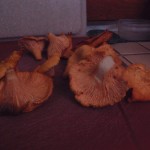 We spent the last few days relaxing and sorting out a few more problems on the boat (turns out, we were sinking faster than normal…). We rowed ashore and met a few more of our fellow club members, all of whom had heard we were coming. Don & Lisa, and Gordon & Leonna greeted us warmly, gave us (me) beer, and fresh-picked chanterelle mushrooms which we ate and drank with gusto!
We spent the last few days relaxing and sorting out a few more problems on the boat (turns out, we were sinking faster than normal…). We rowed ashore and met a few more of our fellow club members, all of whom had heard we were coming. Don & Lisa, and Gordon & Leonna greeted us warmly, gave us (me) beer, and fresh-picked chanterelle mushrooms which we ate and drank with gusto!
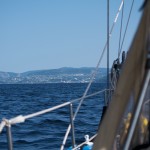 With weather predicted to come in we decided it was time to officially end our journey. We had a great sail, coming into the Bay of Islands Yacht Club. This feels like home for the next few years (at least). The warm welcome continues.
With weather predicted to come in we decided it was time to officially end our journey. We had a great sail, coming into the Bay of Islands Yacht Club. This feels like home for the next few years (at least). The warm welcome continues.
 The friendliness of Newfoundlanders is legendary, and accurately earned. Everyone has been amazing. When we casually mentioned that our car wouldn’t arrive for another week Byron casually said, “no problem. You can have one of mine.”
The friendliness of Newfoundlanders is legendary, and accurately earned. Everyone has been amazing. When we casually mentioned that our car wouldn’t arrive for another week Byron casually said, “no problem. You can have one of mine.”
We love it here already!
